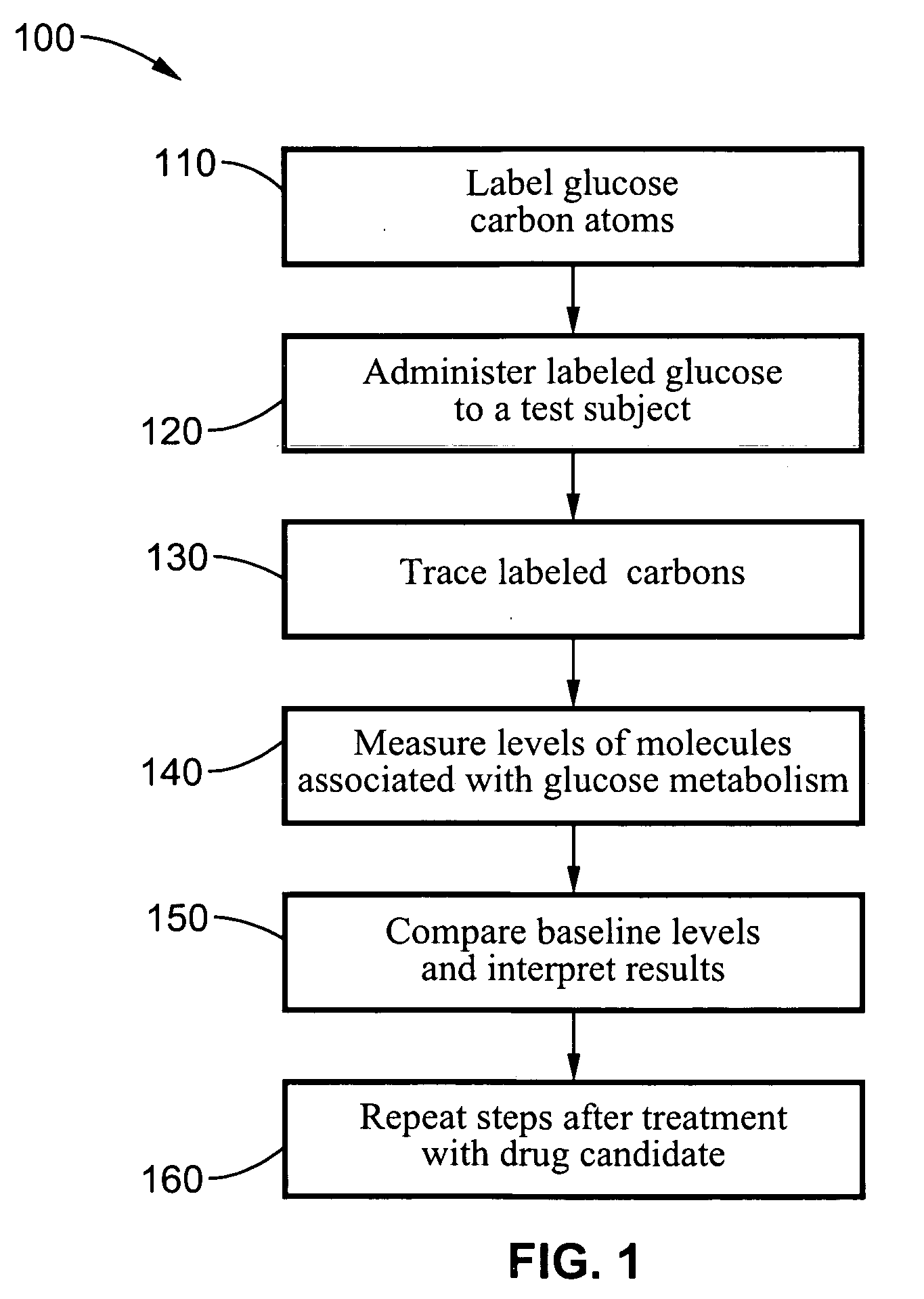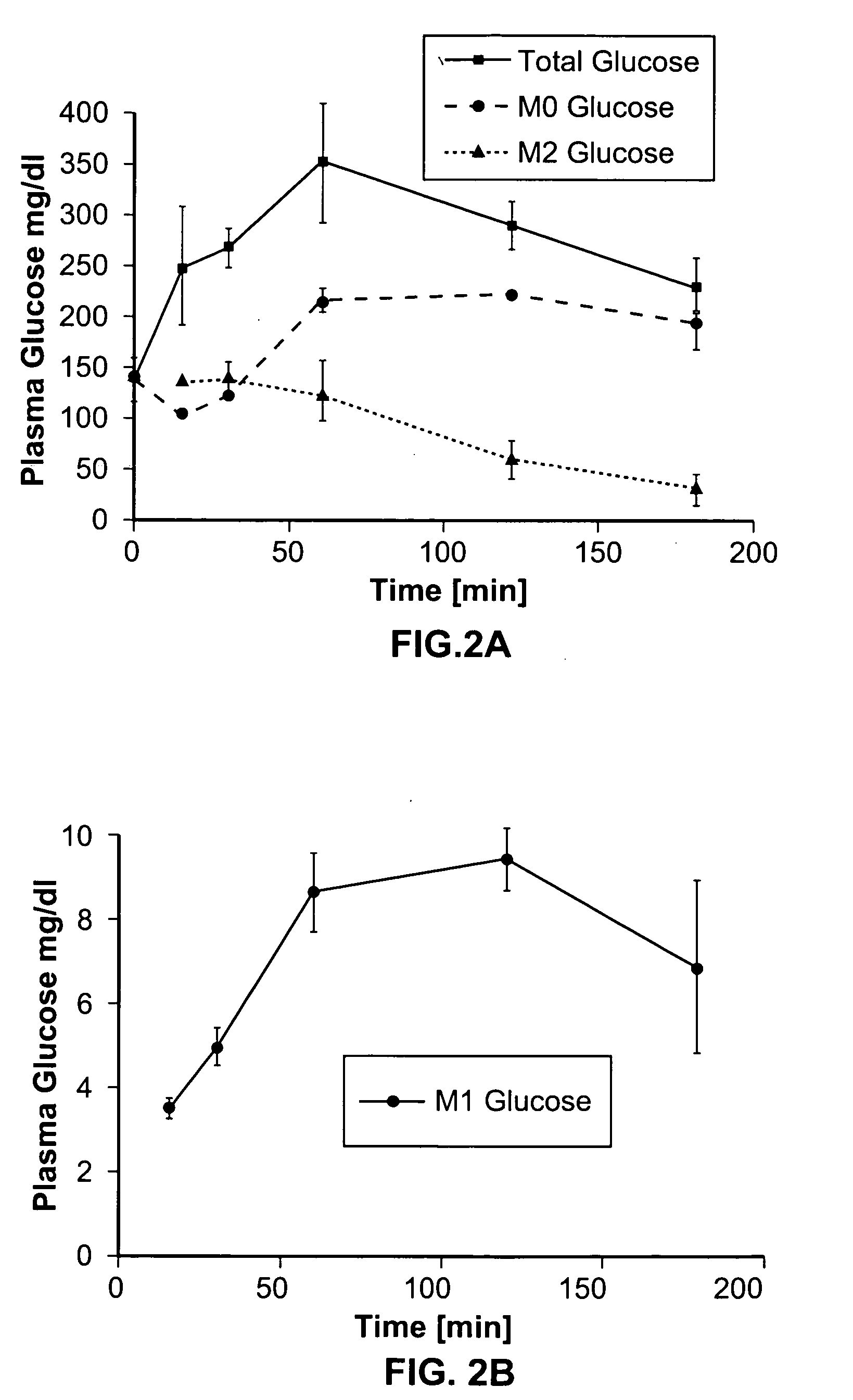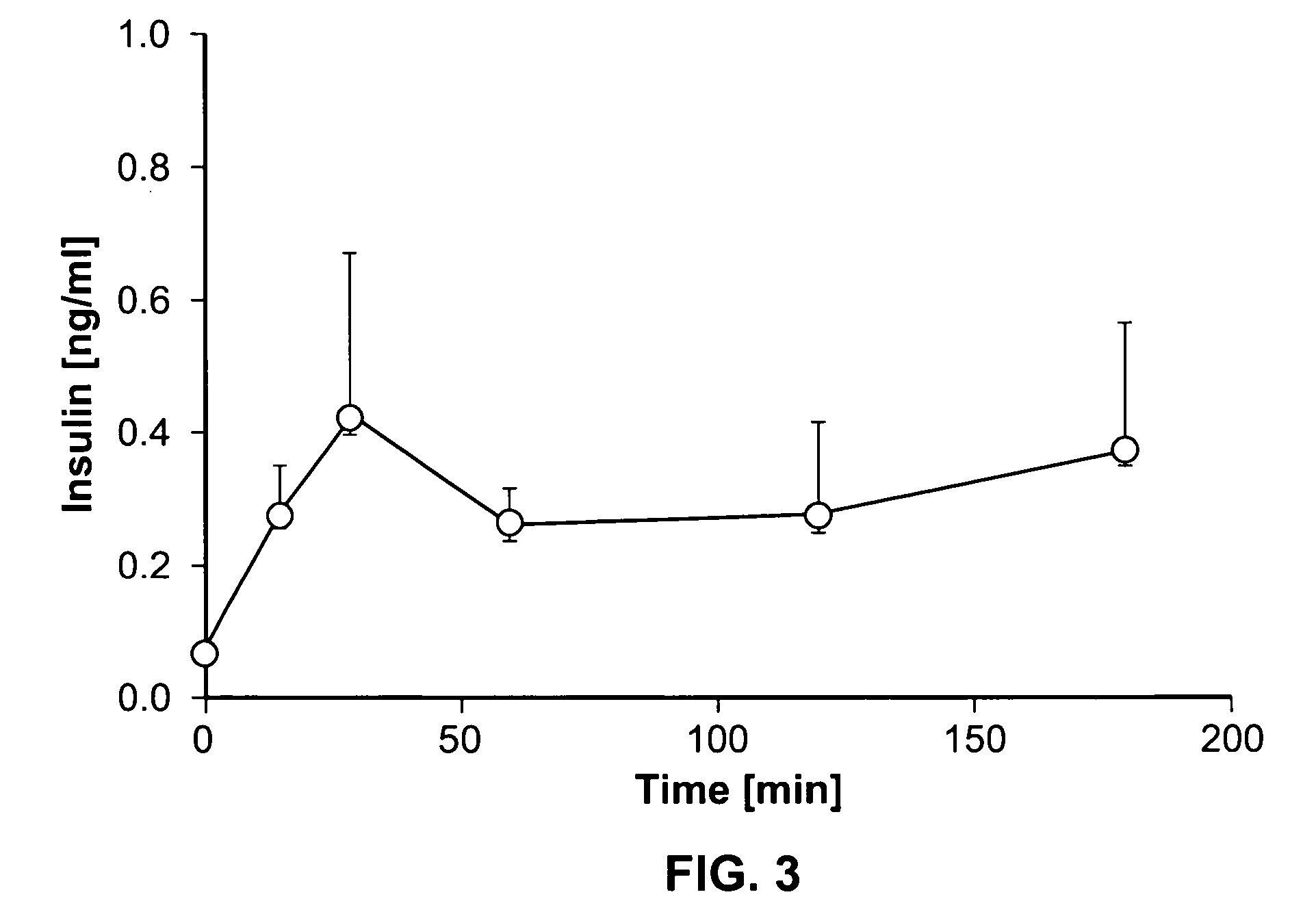Dynamic hepatic recycling glucose tolerance test
a glucose tolerance and hepatic recycling technology, applied in biochemistry apparatus and processes, instruments, surgery, etc., can solve the problems of impaired glucose tolerance, high morbidity and mortality, and insufficient insulin concentration in plasma to influence the metabolic system
- Summary
- Abstract
- Description
- Claims
- Application Information
AI Technical Summary
Benefits of technology
Problems solved by technology
Method used
Image
Examples
example 1
[0051] To demonstrate the intraperitoneal glucose tolerance test (HRGTT) and glucose recycling, a [1, 2-13C2]-glucose (an M2 glucose isotopomer) load was used in 4-month old C57BL6 mice. Stable isotopes of the M2 isotopomer glucose was administered at 1 mg glucose / gm body weight by intraperitoneal injection. Animals were euthanized by an overdose of isoflurane anesthesia, and tissue from liver and skeletal muscle were rapidly dissected free, snap-frozen in liquid nitrogen, and stored at −80° C. until processed for isolation of RNA or glycogen.
[0052] Cytosolic protein was extracted from the liver tissue after homogenization with 10 strikes in lysis buffer containing 0.25 M sucrose, I OmM Tris-HCL(pH7.4), 3 mM MgCL2, 0.1 mM PMSF, 20 mM NaF, 1 mM Na3VO4, 1 MM Na4P207, 1 μg / ml of leupeptin / aprotinin / pepstatin. The resulting cell lysate was filtered with 4 layers of cheesecloth. Nuclei were pelleted by centrifugation at 1000 g for 10 min. Mitochondria were precipitated by centrifugation...
example 2
[0070] In order to evaluate the effect of insulin-responsive gene expressions on substrate fluxes and cycling in the PPARα KO mouse, measurements of the hepatic gluconeogenic flux, glucose absorption, clearance and recycling using the stable isotope isotopomer distribution methods according to the invention.
[0071] The expression of insulin dependent gluconeogenic / glycolytic / pentose cycle enzymes was compared to insulin responsiveness for peripheral versus hepatic substrate flux, and futile cycling, in the PPARα KO mouse. The PPARα KO mouse is a model of fasting hypoglycemia due to disordered fatty acid metabolism. It has been previously shown that the hypoglycemia occurred despite an elevated hepatic glucose production, suggesting increased peripheral glucose utilization as the etiology of hypoglycemia in the PPARα KO mouse. However, the elevated glucose production and gluconeogenesis was resistant to the suppression by insulin suggesting hepatic insulin resistance.
[0072] Wild-typ...
PUM
| Property | Measurement | Unit |
|---|---|---|
| weight | aaaaa | aaaaa |
| body weight | aaaaa | aaaaa |
| weight | aaaaa | aaaaa |
Abstract
Description
Claims
Application Information
 Login to View More
Login to View More - R&D
- Intellectual Property
- Life Sciences
- Materials
- Tech Scout
- Unparalleled Data Quality
- Higher Quality Content
- 60% Fewer Hallucinations
Browse by: Latest US Patents, China's latest patents, Technical Efficacy Thesaurus, Application Domain, Technology Topic, Popular Technical Reports.
© 2025 PatSnap. All rights reserved.Legal|Privacy policy|Modern Slavery Act Transparency Statement|Sitemap|About US| Contact US: help@patsnap.com



